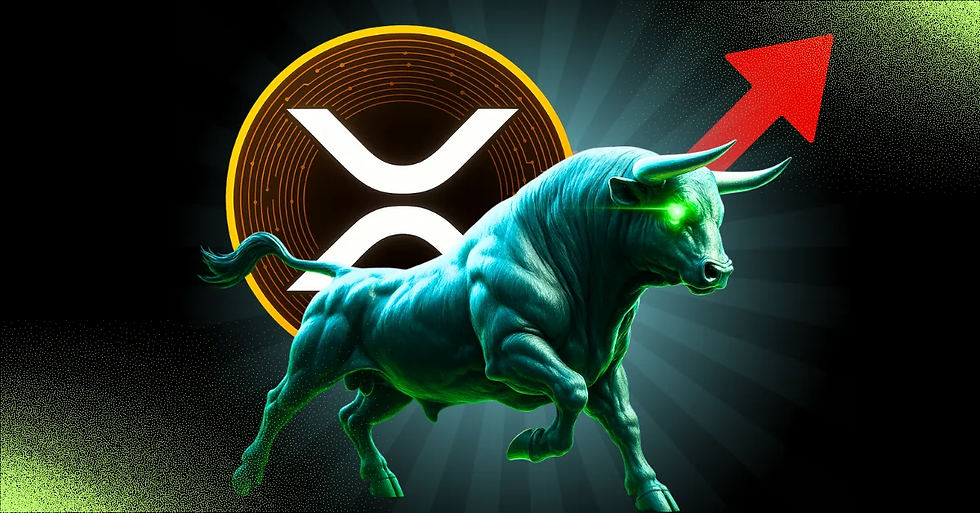XRP’s Real Mission: Transforming the World’s Financial Infrastructure
- Lilly Mackani

- 2 days ago
- 3 min read

XRP, the native digital asset of the XRP Ledger developed by Ripple, has emerged as more than just another cryptocurrency. While many digital assets focus on investment speculation or niche use cases, XRP is proving itself to be a critical utility asset with real-world economic applications—especially in the realm of cross-border payments and financial infrastructure.
The broader vision behind Ripple’s technology—highlighted in the reference article—is that its innovation is not limited to the crypto space. Ripple is positioning XRP and its technology stack to serve as the backbone of a more efficient, equitable, and global financial system.
XRP’s Role in the Ripple Ecosystem
At the core of Ripple’s innovation is RippleNet, an enterprise-grade payments network used by financial institutions across the globe. Within this network, XRP is used in On-Demand Liquidity (ODL), a service that allows for the near-instant settlement of cross-border payments without requiring pre-funded accounts in destination currencies.
This eliminates the need for correspondent banking and reduces the friction and cost traditionally associated with foreign exchange markets.
For example, instead of a bank in Brazil holding reserves in Indian rupees to pay an Indian partner, it can convert Brazilian real to XRP, send XRP across borders, and have it converted to rupees—all in seconds.
XRP: Solving Critical Challenges in Global Finance
Ripple, through XRP, addresses some of the most persistent issues in international finance:
Liquidity: XRP acts as a neutral bridge currency, solving liquidity problems in exotic currency corridors that are typically underserved.
Speed: Traditional SWIFT transfers take 2–5 days. ODL transactions settle in seconds.
Cost: Fees for international wire transfers can reach 5–10%. With XRP, transaction costs are dramatically lower.
Transparency: Ripple’s ledger provides end-to-end visibility and traceability, something most legacy systems can’t match.
Why XRP’s Utility Extends Beyond Crypto
While most cryptocurrencies aim to disrupt traditional finance, XRP is integrating with it. That distinction is crucial. Ripple isn’t trying to replace banks—it’s giving them better tools. XRP’s utility lies in being a liquidity and settlement asset, not a speculative vehicle.
This approach aligns with growing trends:
Central Bank Digital Currencies (CBDCs): Ripple’s CBDC platform is built on the same XRP Ledger tech, allowing seamless interoperability between national digital currencies and private-sector payment networks.
De-dollarization and BRICS cooperation: As global powers like the BRICS nations explore alternatives to USD-centric systems, XRP provides a politically neutral, technology-based bridge that fits the bill.
Regulatory Progress: As of 2025, Ripple has secured regulatory clarity in multiple jurisdictions, including a significant victory in the U.S., which confirmed that XRP is not a security when sold on exchanges. This legal clarity gives institutions the green light to adopt XRP-based solutions.
The Bigger Picture: XRP in a Global Economic Framework
XRP is not just a token traded on crypto exchanges—it’s a programmable digital asset built for a new financial era. Whether it’s remittance corridors, treasury management, micropayments, or real-time settlement for smart contracts, XRP provides infrastructure-level utility.
As the global economy continues its shift toward digitization, automation, and decentralization, XRP is poised to play a fundamental role—not as a speculative coin, but as a cross-border liquidity engine, a neutral financial rail, and a bridge to the future of money.
Conclusion
The article “Why Ripple’s Tech Isn’t Just for Crypto—It’s for the Entire Global Economy” underscores a key reality: Ripple’s technology, and by extension XRP, is not confined to the crypto market. It’s a foundational layer being integrated into the gears of the global financial system.
As international commerce becomes more digitized, fragmented, and fast-moving, XRP’s unique features position it as a powerful enabler of efficient, scalable, and borderless value exchange. The world isn’t just watching crypto anymore—it’s starting to run on it.


